Sixty-year-old marine biologist Wang Aimin stood on a dive boat anchored in the middle of the sea near Wuzhizhou Island in Hainan, the southernmost island province of China, overlooking his coral farm. About 15 meters under the surface of the ocean lies 10,000 square meters of corals in different colors and shapes Wang and his team had planted.
Not far away further into the ocean, two fishing boats floated under the scorching sun. On the shore, helicopters carrying excited tourists from all over the country, undeterred by the pandemic, roared into the air.
Wang took a sigh.
"The impact of these fishing boats is just too great," Wang told CGTN in WeChat messages, ending his words with a crying-face emoji.
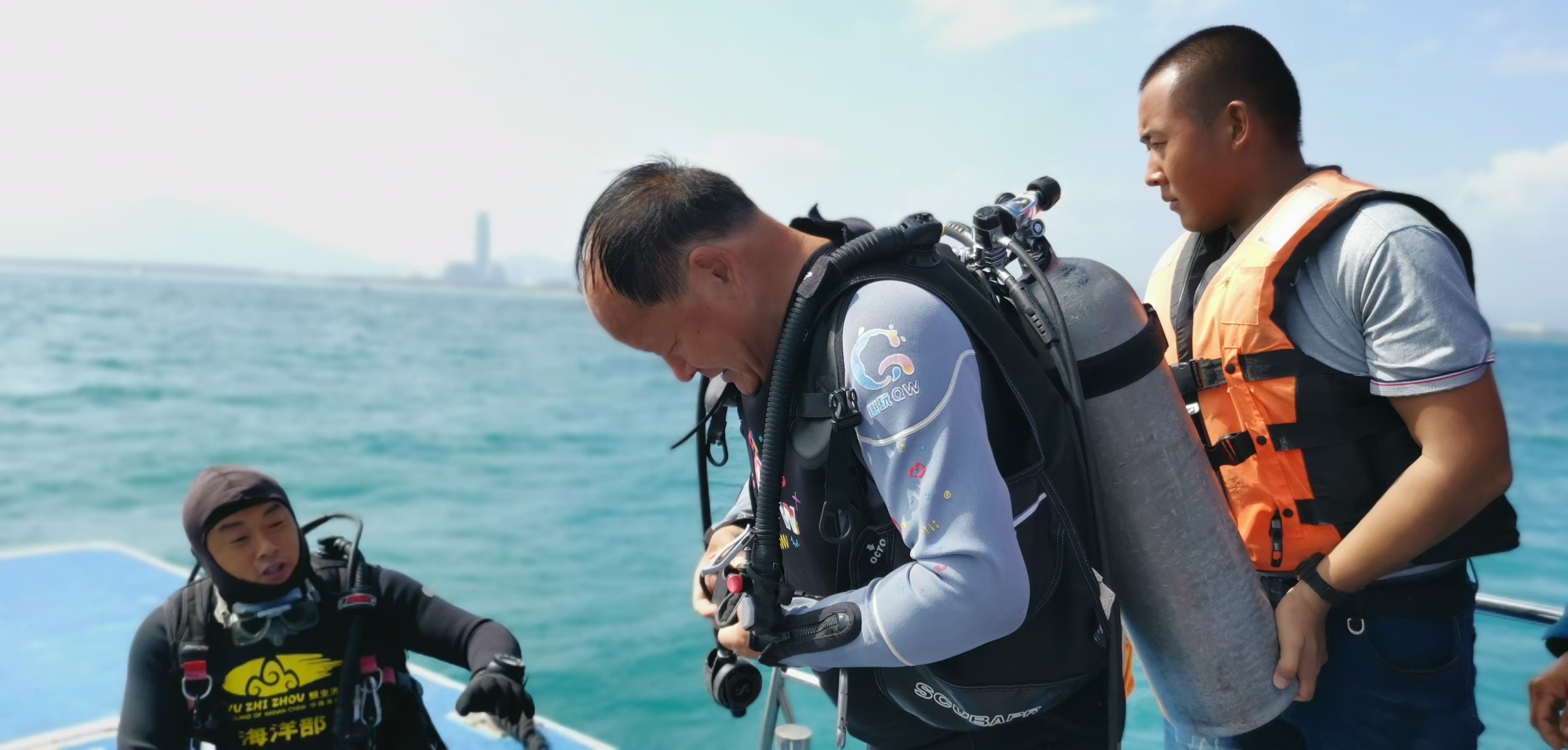
Marine biologist Wang Aimin (Middle) ready to dive underwater near Wuzhizhou Island, Hainan Province, southern China. /Photo provided by Wang Aimin
Marine biologist Wang Aimin (Middle) ready to dive underwater near Wuzhizhou Island, Hainan Province, southern China. /Photo provided by Wang Aimin
The coral farm, built in 2010, was part of the nation's first tropical marine ranching project to restore fishery resources and protect the marine ecosystem around the island off Hainan's southern coast as global warming, overfishing and water pollution impacted fish and other marine life.
Coral reefs, an underwater ecosystem built by and made up of thousands of tiny animals – coral "polyps," only take up 0.2 percent of the ocean, but sustains a quarter of marine life and a third of marine fishes.
According to the International Union for Conservation of Nature (IUCN), coral reefs harbor the highest biodiversity of any ecosystem globally and directly support over 500 million people worldwide, mostly in poor countries, through fishing stocks and tourism opportunities.
That ecosystem deemed as "rainforest underwater" has been put under threat by global warming. A mutually beneficial relationship between the corals and algae sustains the reef system: corals provide algae with shelter while the algae offer corals nutrients and colors through photosynthesis. When temperature gets high, stressed-out corals expel the algae and thus lose its color, triggering a bleaching event. If the sea water remains warm, they will eventually starve and die.
Globally, IUCN reports coral reefs around the world have suffered from mass coral bleaching events from 2014 to 2017. In the summer of 2020 alone, one quarter of the Great Barrier Reef – the world's largest coral reef system – suffered severe bleaching in the most widespread outbreak ever witnessed, according to the Guardian.
Waters in China are not immune.
Li Xiubao, another coral researcher, drew a dire picture of waters near Hainan, especially around its northwest coast, where bleaching hit almost 100 percent of waters near Danzhou City and Lingao City in the summer of 2020.
Before the coral farm was built, Wuzhizhou was already sounding the alarm for preservation. Wang recalled ten years ago when he dived under the water there, few fish could be seen due to overfishing and the corals were disturbed by frequent activities by diving enthusiasts.
Now, after 10 years of continuous maintenance and investment, the coral farm has been built into a model for other tropical waters in the country.
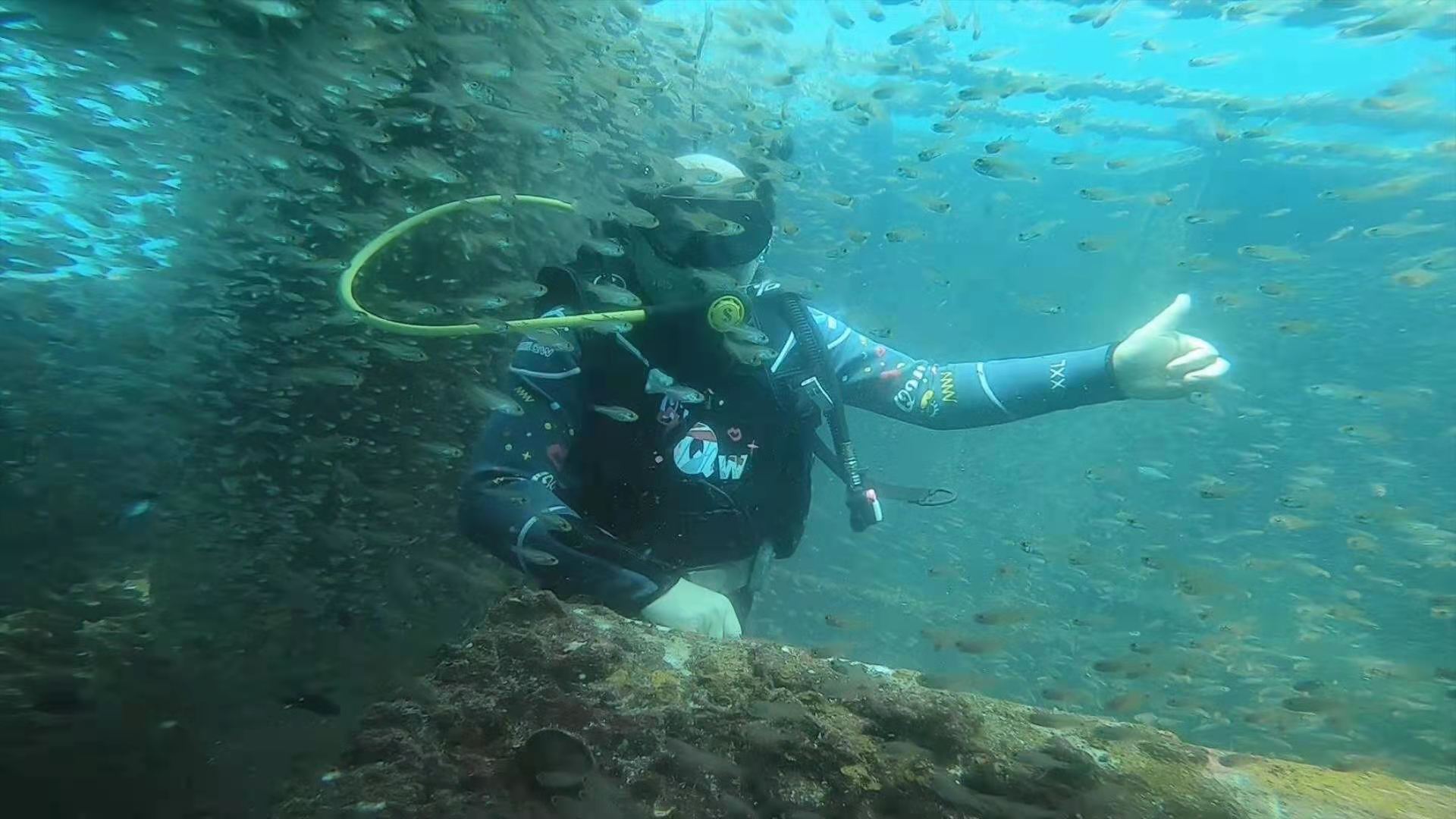
Marine biologist Wang Aimin posing for photo underwater near Wuzhizhou Island, Hainan Province, southern China. /Photo provided by Wang Aimin
Marine biologist Wang Aimin posing for photo underwater near Wuzhizhou Island, Hainan Province, southern China. /Photo provided by Wang Aimin
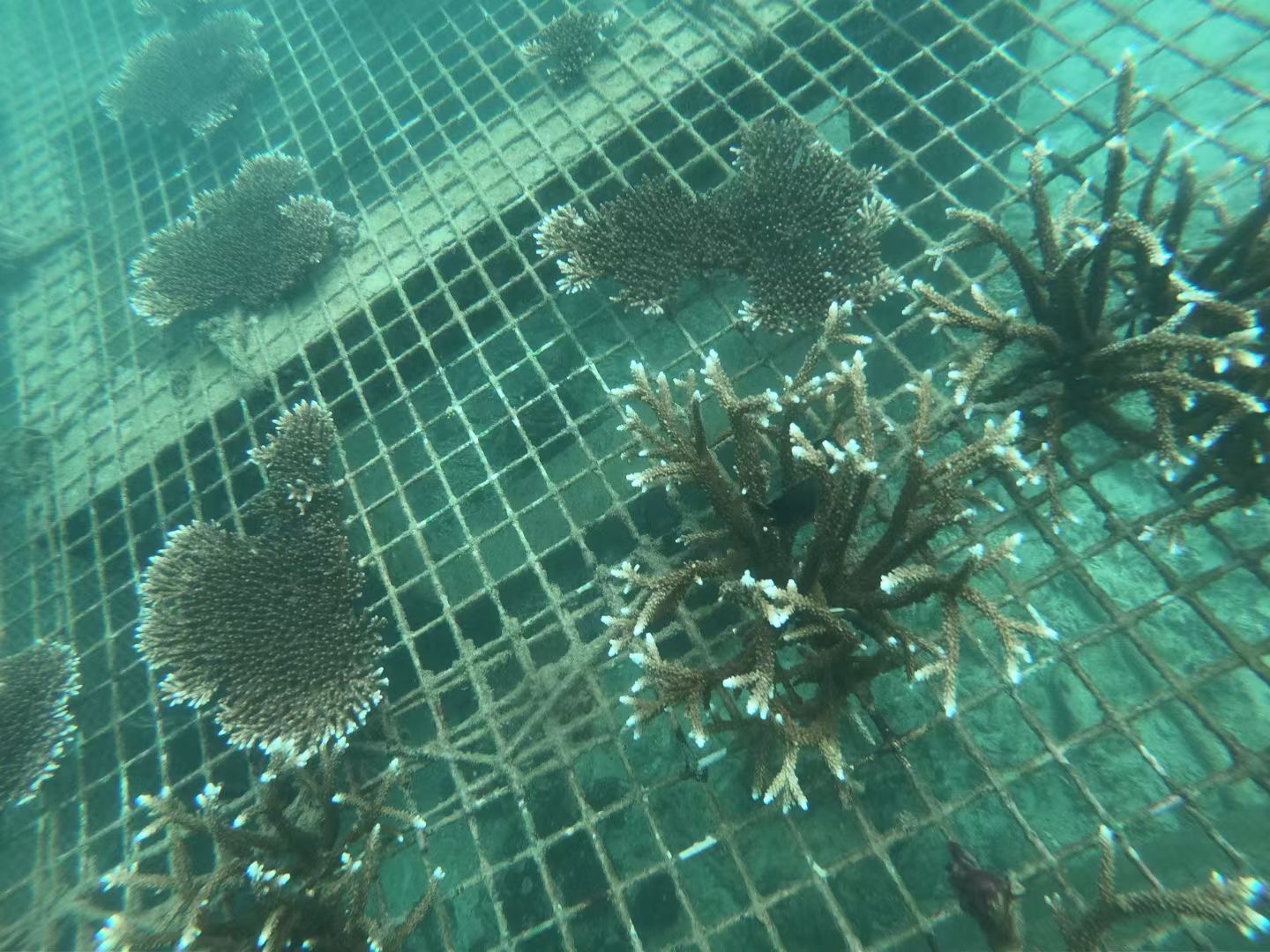
Corals planted on Wuzhizhou Island Coral Farm, Hainan Province, southern China. /Photo provided by Wang Aimin
Corals planted on Wuzhizhou Island Coral Farm, Hainan Province, southern China. /Photo provided by Wang Aimin
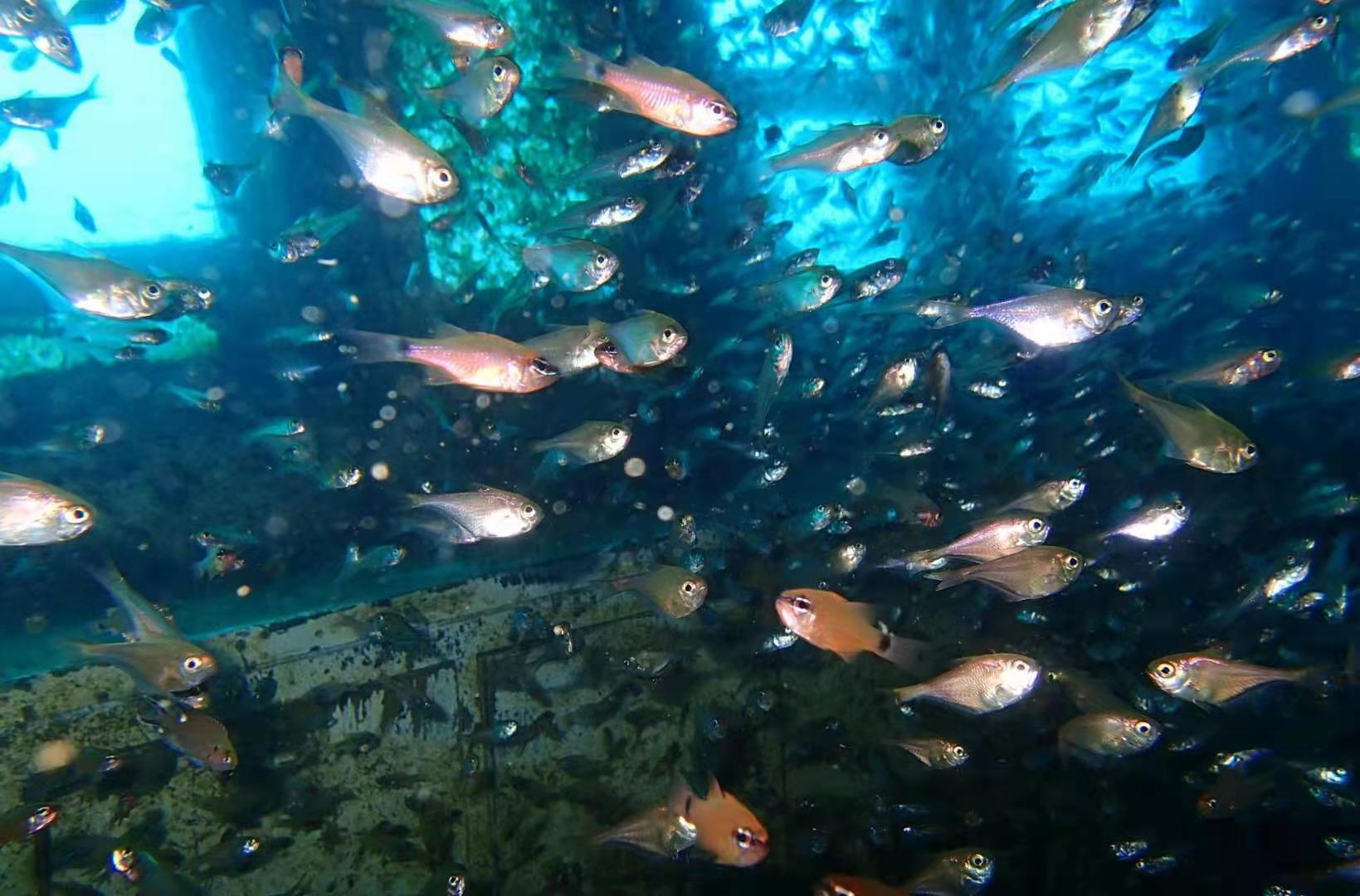
Fish living in Wuzhizhou Island Coral Farm, Hainan Province, southern China. /Photo provided by Wang Aimin
Fish living in Wuzhizhou Island Coral Farm, Hainan Province, southern China. /Photo provided by Wang Aimin
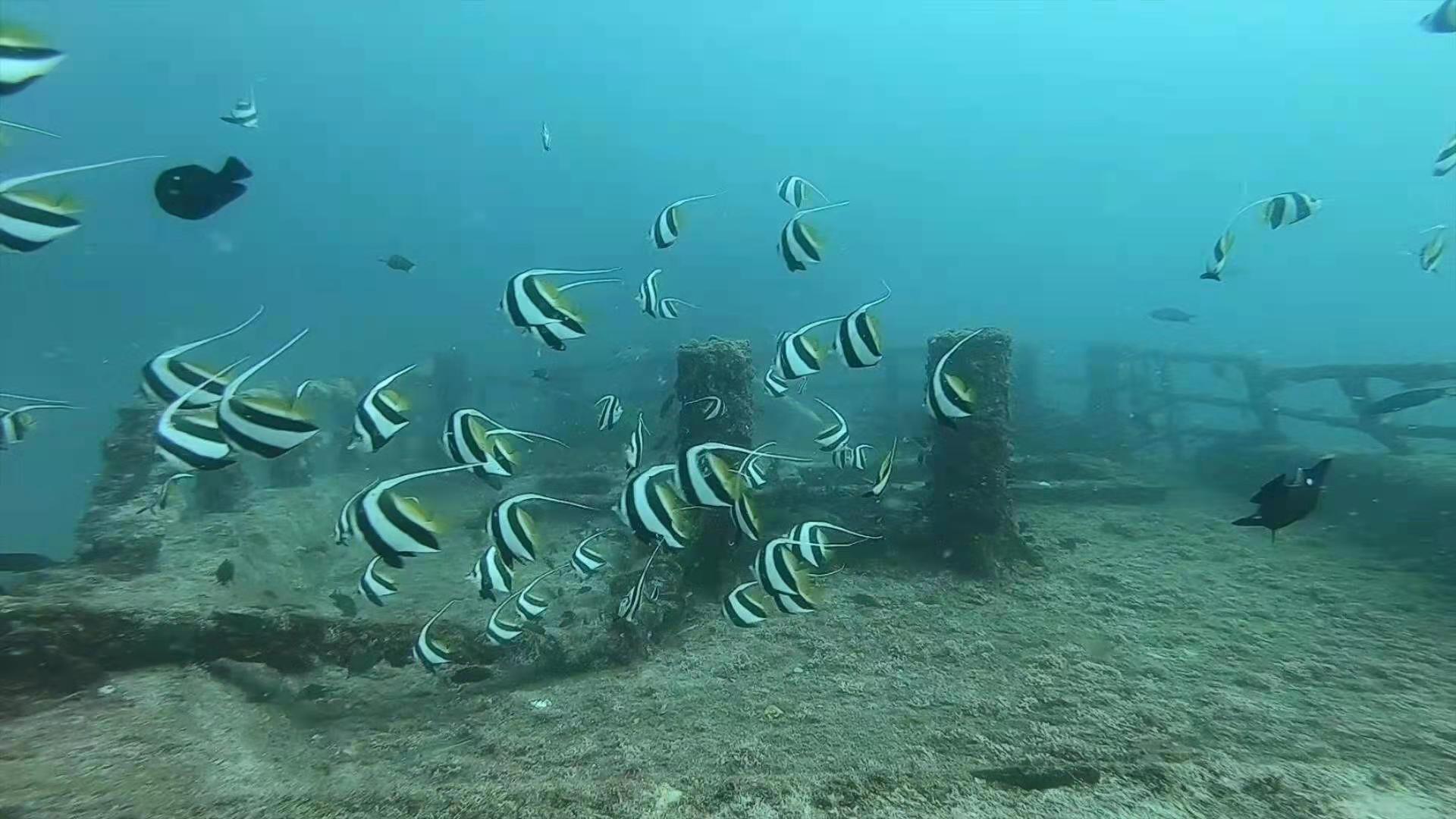
Wuzhizhou Island Coral Farm, Hainan Province, southern China. /Photo provided by Wang Aimin
Wuzhizhou Island Coral Farm, Hainan Province, southern China. /Photo provided by Wang Aimin
The corals today are covering over 20 percent of ocean bed in the region, instead of about 15 percent a decade ago. What's more, according to Wang, research has shown that waters at higher latitude like Wuzhizhou may offer refuge to corals as these areas have been hit less harder by global warming than waters near the equator.
In January, while diving underwater near the island, CGTN reporters found that the coral farm was able to sustain groups of tropical marine fish.
Live: Go, Hainan! The underwater world
At the same time, the farm has been a major tourist attraction on the island by letting diving enthusiasts see the colorful underwater world.
But the success story hardly continued without problems.
According to Wang, the coral farm was first proposed with a protecting-while-developing approach, which means cooperation between the research team that is in charge of all technical issues on coral conservation and a local private tourism company that deals with administrative affairs while profiting from tourist activities in the coral farm.
"There are two types of coral farms: nonprofit and for-profit. The first is usually managed by government, while the second by companies. Government-initiated projects often end up unmanaged and under-funded eventually, so we prefer working with companies that can continue to support our research financially," Wang said, giving no further details as to why non-profit projects tend to become unattended to.
But Wang and Li are also concerned about how to preserve their farm from tourist activities such as diving and offshore recreational fishing that the partnership with the company brings in the package. Divers could easily touch and destroy corals underwater and their flippers could disrupt the current flow, which is detrimental for corals' growth.
In spite of that, what worries the researchers most is the fishing boats.
"When local fishermen learnt that the fishes here have been increasing, they steered their boats here, but more fishing activities could further shrink the fishery resources, damaging the coral reef system," Wang told CGTN.
"So far, the balance is struck. But the problem is to enhance regulation around the coral farm, especially on illegal fishing activities by local fishermen during the night, so that the fishes could help corals to recover," Li said.
Wang noted the illegal fishing activities could have a far bigger impact on the underwater farm than tourism. The deprivation of fish species could jeopardize the eco-balance that corals rely on, while the abandoned fishing nets could squeeze corals' growing space.
"We have been seeing fishing nets lately on our coral reefs, which could directly influence corals' growth. We have to collect them very often," said Wang.
While Hainan Province annually imposes fishing bans, last year being from May 1 to August 16, it's common practice for local fishermen to break the law.
"What are we going to eat, if we cannot fish?" asked a fisherman surnamed Zhang living in Tenghai Village in Sanya City.
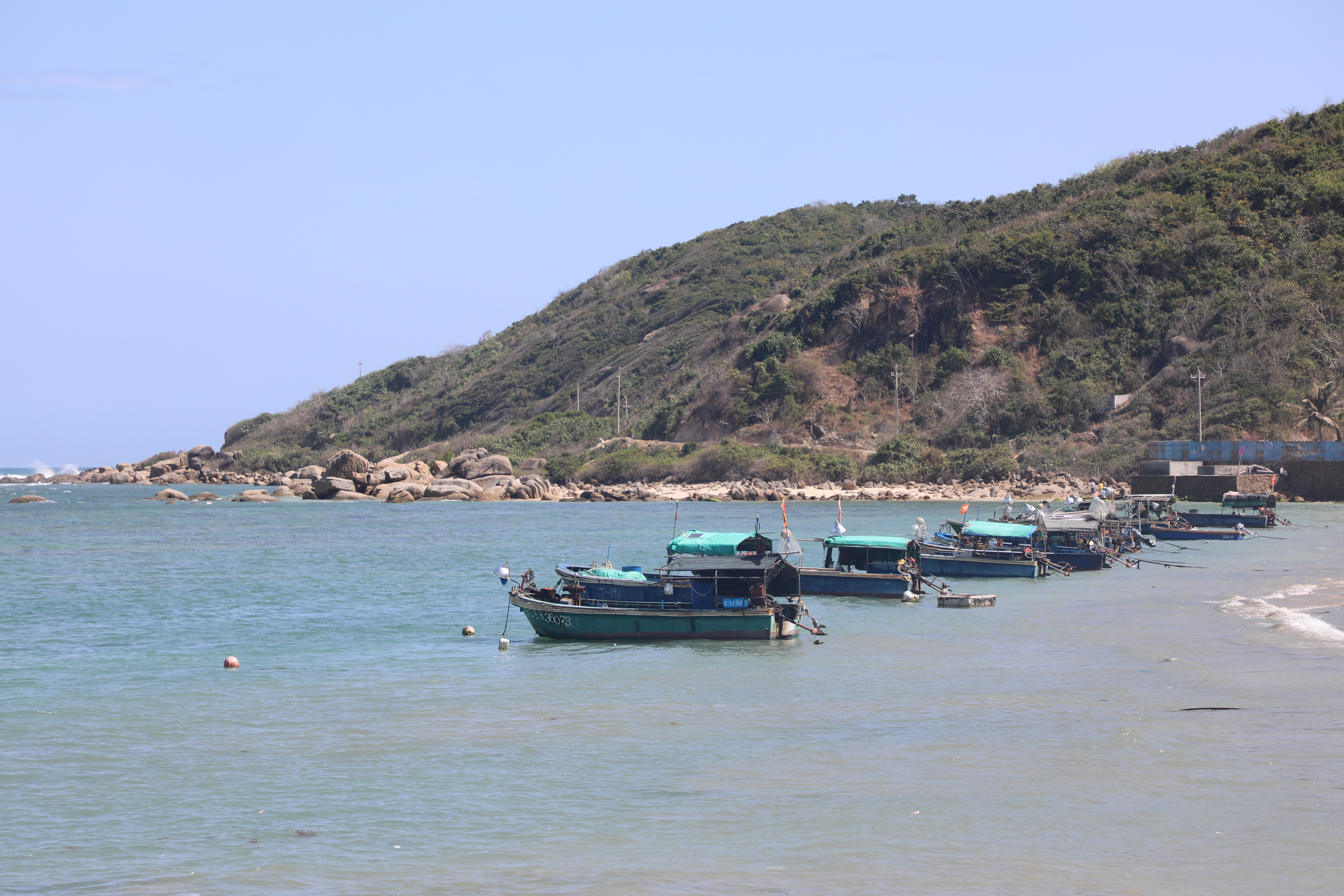
Fishing boats docked at port, Sanya City, Hainan Province, southern China on February 1, 2021. /Photo by Chen Chen
Fishing boats docked at port, Sanya City, Hainan Province, southern China on February 1, 2021. /Photo by Chen Chen
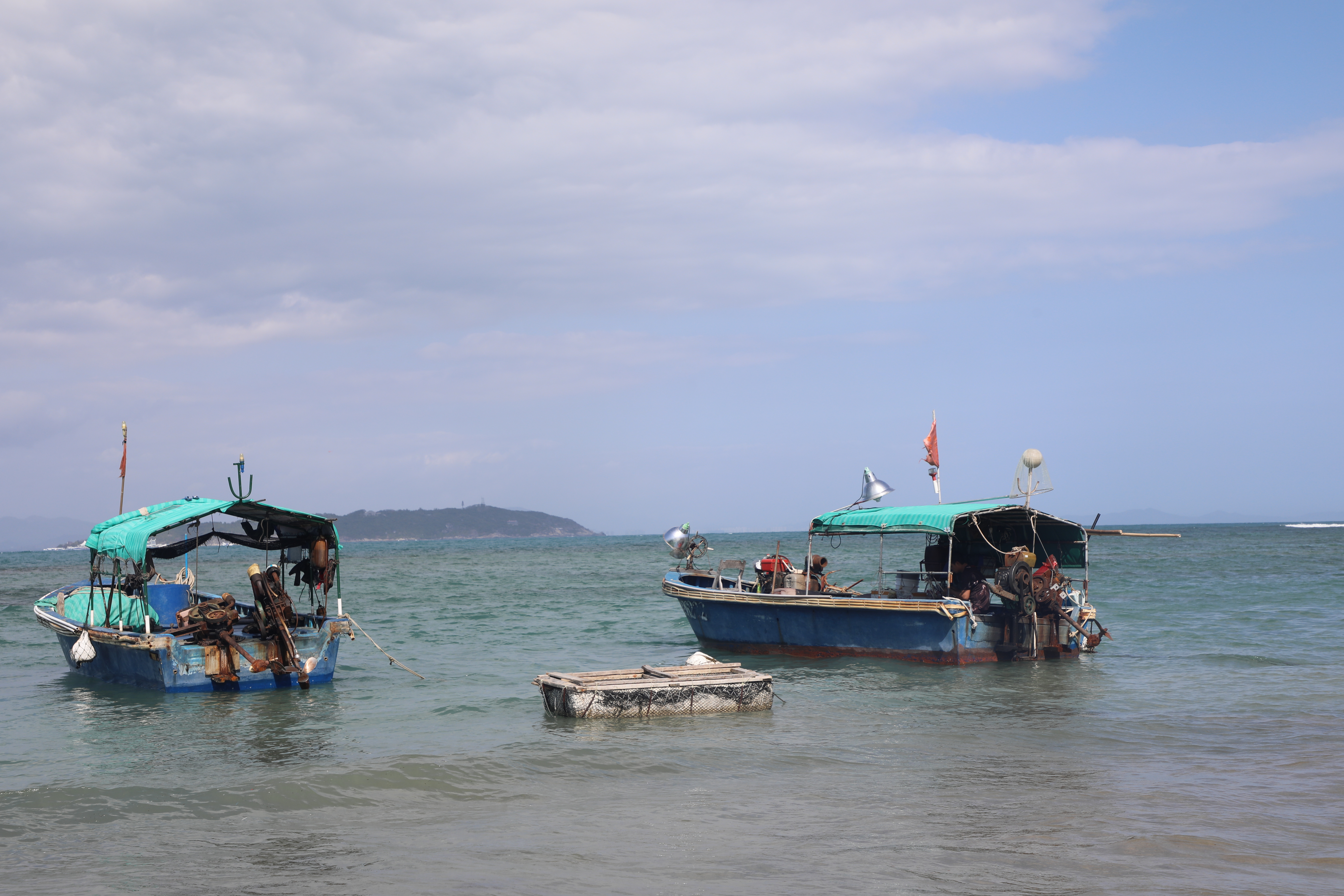
Fishing boats docked at port, Sanya City, Hainan Province, southern China on February 1, 2021. /Photo by Chen Chen
Fishing boats docked at port, Sanya City, Hainan Province, southern China on February 1, 2021. /Photo by Chen Chen
Thirty-nine-year-old Zhang told CGTN while holding a fishing pole on a peer that stretched into the sea that he and other fishermen in the village that have been living on fishing for decades have been catching less and less fish in recent years. Zhang said in order to support their family, they have no option but to set sails and head to the sea more often.
However, Wang's research team has neither jurisdiction over fishing boats nor direct links to the local fishery authority, putting them in a position where they have to rely on the tourism company to convey their concern upwards.
So far, Wang and Li, the two professors from Hainan University, are proud of their coral farm and are hoping that other places can learn from their experience.
Wang expects a new phase in the coral farm's construction by June, as his team plans to place about 600 more reef bodies underwater and develop more tourism products in the farm. Li also believes that strong government support in coral research will give confidence to researchers like him.
About 'Go! Hainan' series
Featuring unspoiled tropical rain forests, sandy beaches and a rich culture, Hainan Province is the southernmost island province of China. Nicknamed "China's Hawaii," Hainan is on its way to becoming a free trade port. The "Go! Hainan" livestream series takes you on a new journey to explore the fantastic island and its underwater world.
For more:
A glimpse underwater near southern China's Wuzhizhou Island
Fenjiezhou Island: An islet bordering north and south Hainan
Underwater lives flourishing in Hainan's marine ranch
A time-honored opera in Hainan: Wenchang Doll Opera
Sea of clouds hangs over south China's Hainan Province

